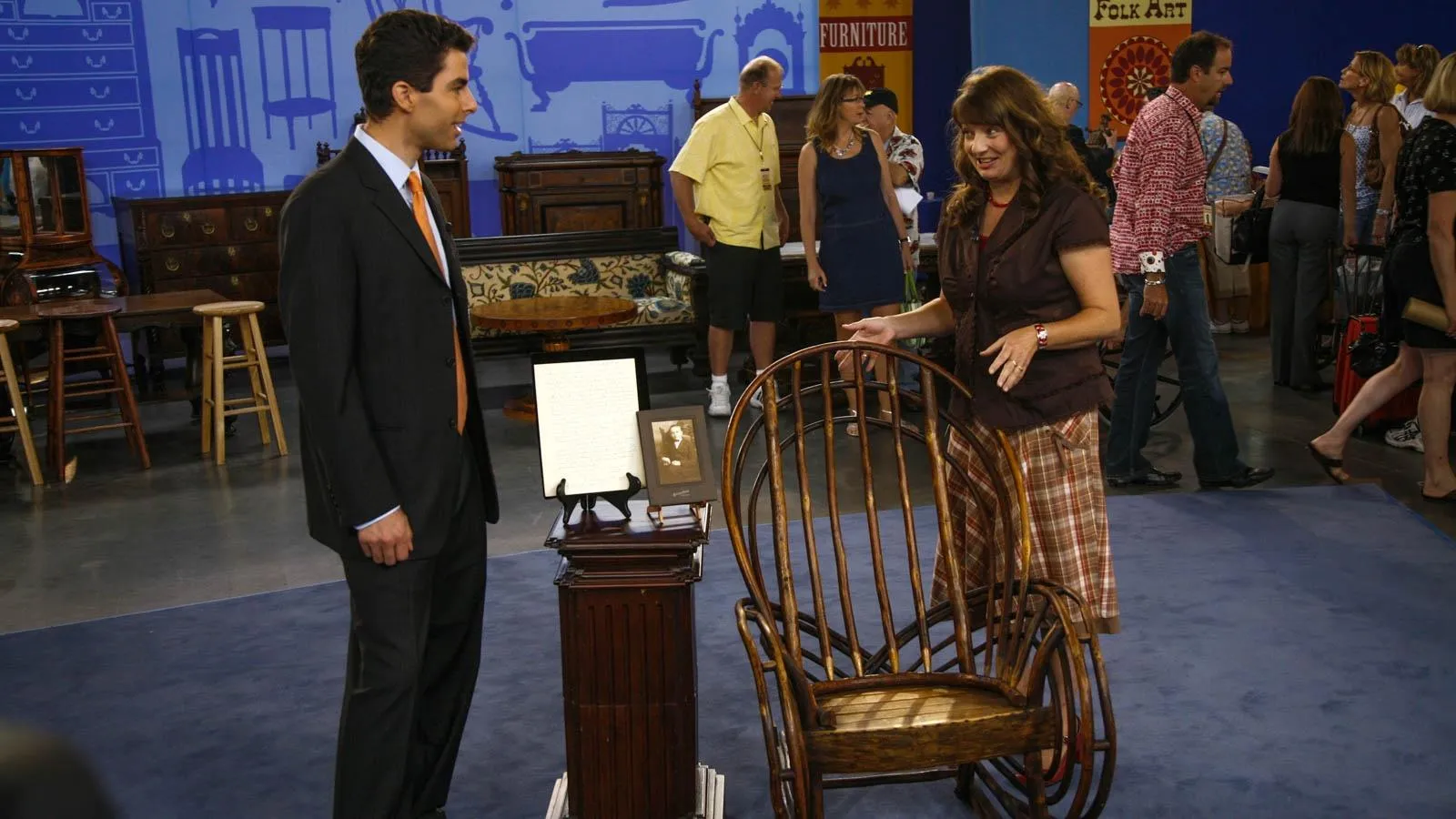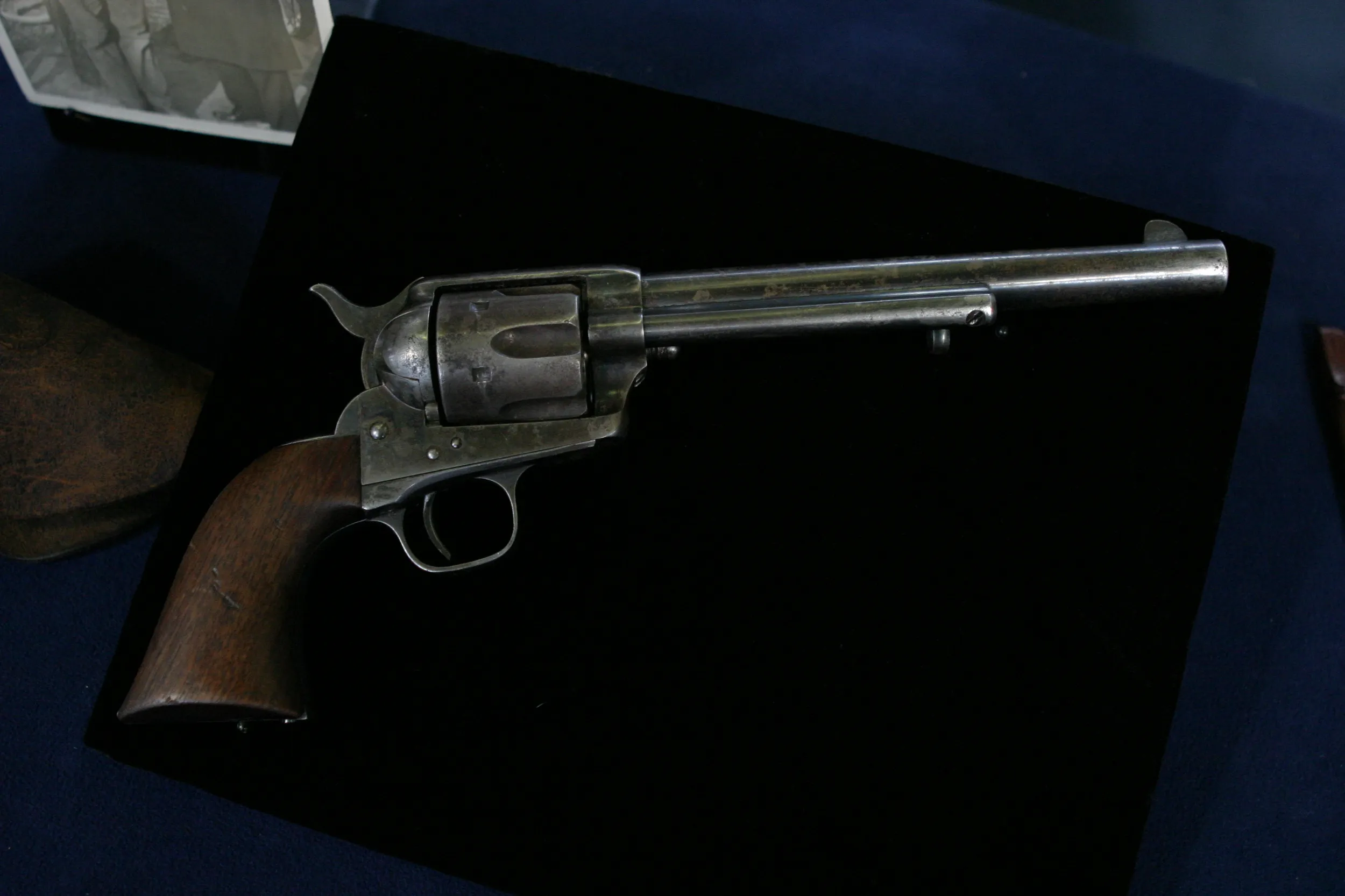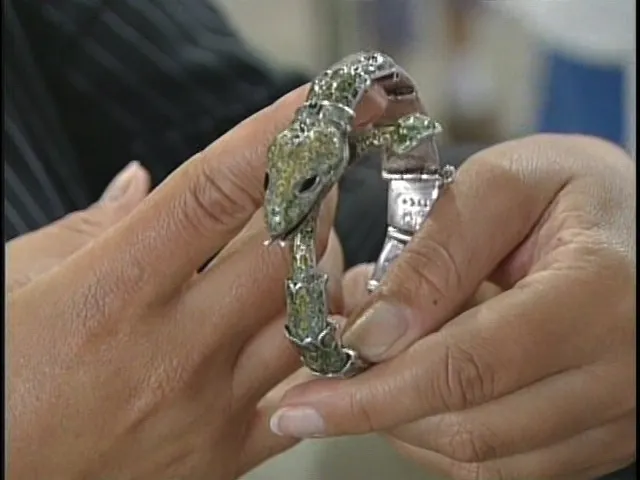GUEST: This is a mystery for me. It is something that my husband and I inherited from his aunt. Aunt Jean and her husband lived in Eureka.
APPRAISER: Mm-hmm.
GUEST: And they did a lot of collecting, and collected art glass, and this was in her collection.
APPRAISER: Mm-hmm.
GUEST: My husband called it a princess cup. It was, like, one of his favorite things.
APPRAISER: Right.
GUEST: I believe he called it a princess cup because probably his aunt called it a princess cup.
APPRAISER: Okay.
GUEST: But we really know nothing. I know nothing about it. My husband, unfortunately, has passed away.
APRRAISER: I'm sorry.
GUEST: Um, today's his birthday, though, so I just feel like it's all meant to be that we're here with one of his favorite things, and I'm going to find out what it truly is.
APPRAISER: And we are so fortunate to be able to see one of the things here today that he really, really did treasure. So thank you very much for bringing it to us. You mentioned it was called colloquially the, uh, princess cup.
GUEST: Yes.
APPRAISER: Affectionately known. The thing with this being a cup, of course, is that it has lots of holes in it.
GUEST: Yes, that's problematic.
APPRAISER: It's known as a zarf-- that's spelt Z-A-R-F. It's a very unusual-sounding word, but it's actually coming from the Arabic for "envelope."
GUEST: Mm.
APPRAISER: Which, basically, you know, to enclose something.
GUEST: Okay.
APPRAISER: And as we can see, because of the holes we mentioned a second ago, it's not going to work as a cup as it is.
GUEST: Correct.
APPRAISER: So it's going to have supported a glass that would have been used to hold coffee. It's essentially a coffee glass holder.
GUEST: Really?
APPRAISER: Yeah.
GUEST: Wow!
APPRAISER: Coffee was introduced into-- and this is where you sort of find out where it's from-- into Istanbul in the mid-16th century. It's an Ottoman zarf. The Ottoman Empire spread across the Near East. It incorporated Syria, parts of Iran, Iraq, and so on and so forth, until the Ottoman Empire fell in the 1920s, and so this was made during the Ottoman Empire, probably towards the end of the 19th century. It's made of 18-karat gold. It's enameled, and it also has a profusion of these old-mine-cut diamonds. So quite clearly, for a coffee cup, it's exceptionally beautiful and handsomely crafted. The reason being is that, just with tea and with other drinking cultures across the world, coffee was seen as something that was still imbued with a lot of ceremony in a, in, uh, sort of Ottoman Turkey and elsewhere, in Iran and so on. And so the receptacles to hold the drink could have been incredibly lavish and well-made, such as this one. This would have probably been used, even though it is such a luxury, high-status thing. It would have obviously shown the status of the owner. They were often also given as gifts to various courts and other high-status individuals within Europe and elsewhere. So it's a beautiful object.
GUEST: Yes, I wouldn't, I would never have guessed that that was its purpose.
APPRAISER: At auction, I would estimate this to sell for between $3,000 and $5,000.
GUEST: (mouthing, laughing) Wow. Wow. I'm... (laughing) ...really surprised. Pat would be so happy. (voice breaking): That's...
APPRAISER: It's, it's a lot of...
GUEST: That's amazing!
APPRAISER: It's a lot of money.
GUEST: It's, for, to hold a cup of coffee.
APPRAISER: Exactly. It's beautiful.
GUEST: It is.
APPRAISER: It's really exquisite, and, uh...
GUEST: Thank you so much.
APPRAISER: Well, thank you. Thank you for bringing it on.












